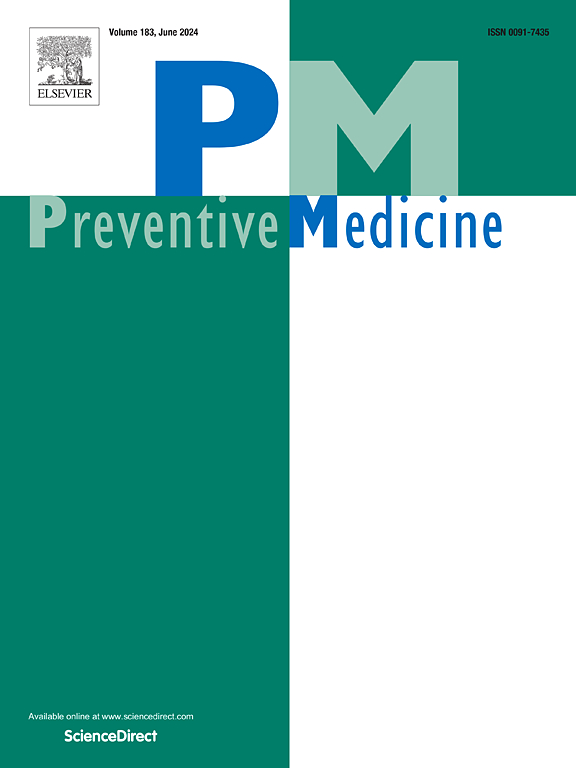吸烟对女性心血管疾病的不同影响:叙述性综述和行动呼吁。
IF 4.3
2区 医学
Q1 MEDICINE, GENERAL & INTERNAL
引用次数: 0
摘要
目的:吸烟仍然是导致心血管疾病(CVD)发病和恶化的主要因素。随着女性吸烟者的比例越来越大,必须进一步探讨吸烟的性别特异性影响并采取相应措施:本叙述性综述介绍了吸烟对女性心血管疾病的不同影响的现有证据以及改善治疗的必要性:迄今为止的证据表明,吸烟对女性心血管系统的负面影响尤为严重,尤其是对年轻女性。通常,女性心血管疾病的发病时间晚于男性,但吸烟会缩小或消除这一差距。女性也更容易患上与吸烟密切相关的心血管疾病,如ST段抬高型心肌梗死,而年轻女性的发病率更高。女性吸烟导致不良后果的可能机制包括尼古丁、燃烧香烟的其他产物和荷尔蒙之间复杂的相互作用。在吸烟治疗方面也存在性别差异。在女性中,伐尼克兰似乎比安非他酮或尼古丁替代疗法更有效,而在男性中,这三种疗法显示出相似的疗效。在二级预防中,吸烟率的差异也很明显。女性和男性在进入二级预防时的吸烟率相当,而女性接触吸烟副产品的程度可能更高:女性吸烟者的这些不成比例的负面结果需要更多的研究,而这些持续存在的吸烟率表明,需要采取针对女性的方法来治疗吸烟。本文章由计算机程序翻译,如有差异,请以英文原文为准。
Differential effects of cigarette smoking on cardiovascular disease in females: A narrative review and call to action
Objective
Cigarette smoking continues to be a major driver in the incidence and progression of cardiovascular disease (CVD). As females become an increasingly larger fraction of those who smoke it is imperative that the sex-specific effects of smoking be further explored and acted upon.
Methods
This narrative review describes current evidence on the differential effects of smoking on CVD in females and the need to improve treatment.
Results
Evidence to date suggests that smoking has disproportionately negative effects on the cardiovascular (CV) system in females, especially in those who are younger. Usually, the onset of CVD is later in females than males, but smoking decreases or eliminates this gap. Females are also more likely to develop types of CVD closely tied to smoking, such as ST-elevated myocardial infarctions, with even higher rates among those who are younger. Possible mechanisms for these worse outcomes in females include a complex interplay between nicotine, other products of combusted cigarettes, and hormones. Sex differences also exist in treatment for smoking. In females, Varenicline appears more effective than either Bupropion or nicotine replacement therapy while in males, all three therapies show similar efficacy. Disparities in smoking are also apparent in secondary prevention settings. Females and males are entering secondary prevention with equal rates of smoking, with potentially higher levels of exposure to the byproducts of smoking in females.
Conclusions
These disproportionately negative outcomes for females who smoke require additional research and these persisting rates of smoking suggest a need for female-specific approaches for treating smoking.
求助全文
通过发布文献求助,成功后即可免费获取论文全文。
去求助
来源期刊

Preventive medicine
医学-公共卫生、环境卫生与职业卫生
CiteScore
7.70
自引率
3.90%
发文量
0
审稿时长
42 days
期刊介绍:
Founded in 1972 by Ernst Wynder, Preventive Medicine is an international scholarly journal that provides prompt publication of original articles on the science and practice of disease prevention, health promotion, and public health policymaking. Preventive Medicine aims to reward innovation. It will favor insightful observational studies, thoughtful explorations of health data, unsuspected new angles for existing hypotheses, robust randomized controlled trials, and impartial systematic reviews. Preventive Medicine''s ultimate goal is to publish research that will have an impact on the work of practitioners of disease prevention and health promotion, as well as of related disciplines.
 求助内容:
求助内容: 应助结果提醒方式:
应助结果提醒方式:


